Abstract: A patient reported to my clinic with moderate right side lower lip swelling with severe throbbing, burning pain which was worse by touch and better by cold application. Unable to swallow. Having h/o taken out side food.
I diagnosed that this is a food allergic angioedema of lower lip. The patient was reassured and given Belladonna 30 orally for 3 days and Lachesis 30 orally, once daily for 3 days after which the symptoms subsided. This paper will discuss the pathogenesis, classification, identification, and management of angioedema.
Key words : Angioedema, Swelling, Allergic reaction, Homoeopathy
Introduction: Angioedema is an acute, circumscribed edema swelling of the deeper layers of the skin or mucous membrane which is caused by accumulation of fluid by decreasing auto antibody production (weak immune system) associated with urticaria or may occur independently. It is due to a reaction of a trigger, such as a medicine or other allergens1
- It is not normally serious, but it can be a very life-threatening if it affects breathing.
- It is usually affects the most distensible tissues, such as the eyelids, lips, ear lobes, and external genitalia, or the mucous membranes of the mouth, tongue, or larynx.2
Duration : < 6 weeks
Causes of angioedema 4
It may be triggered by :
- An injury or infection
- Surgery and dental treatment
- Stress or anxiety
- An allergic reaction such as a food allergy – this is known as allergic angioedema
- Certain medicines, such as the contraceptive pill, a medicine, such as angiotensin-converting enzyme (ACE) inhibitors for high blood pressure
- Genetic fault (1 in 2 chance of passing it on to your children)
- Hot or cold temperatures
- May be associated with other medical conditions, such as lupus or lymphoma (cancer of the lymphatic system).
Types
- There are 4 main types of angioedema5:
| Allergic angioedema | Idiopathic angioedema | Drug-induced angioedema | Hereditary angioedema | |
| Cause | Immune system attacks harmless substances. | Identifiable cause is known as | Some medications can cause | A change in the DNA |
| Trigger by | 1) certain types of food–particularly nuts, shell fish, milk and eggs | 1) anxiety or stress | 1)ACE inhibitors | 1) Mutated C1-inh gene is passing in families. |
| 2) some types of medication – Like penicillin, aspirin & NSAIDs, such as ibuprofen | 2) Minor Infections | 2) Bupropion – that helps people to give up smoking | 2) If you have hereditary-50% chance of passing to your child. | |
| 3) Insect bites and stings-particularly wasp and bee stings | 3) hot/ cold temperatures
|
3) NSAIDs – a type of painkiller | ||
| 4)latex – naturally occurring rubber used to make gloves, balloons etc | 4) exercise
|
4)PPI; for stomach ulcer |
Symptoms4
As well as visible swellings, angioedema can cause other symptoms, including:
| · Redness | · Painful / itchy skin |
| · Urticaria | · Difficulty breathing |
| · Red, irritated eyes | · Abdominal pain |
| · Diarrhoea | · Dizziness |
| · Fainting |
When to get medical advice2
- Sudden or worsening breathing problems
- Feels faint or dizzy
- Collapses
- Swelling of the lip, tongue and throat
Diagnosis4
Tests you may have include:
- A Skin prick test – your skin is pricked with a tiny amount of the suspected allergen to see whether there is any reaction appears or not.
- A Blood test – a sample of your blood is tested to determine whether your immune system reacts to a suspected allergen or not.
Homoeopathic Medicine:
Apis Mellifica3:
- Puffy swelling as when bitten by flies.
- Scanty urination.
- Swelling of upper lips without any bite.
Lycopus virginicus3:
- Swelling with pain.
- The pain is completely relieved by this remedy although painless swelling continues.
Belladonna3:
- Swelling of lip, with stiff feeling on opening mouth.
- Redness and swelling (Bry, Apis ); of tongue and gum, with dryness of throat and difficult swallowing6 .
- When the swelling is red with burning and throbbing pain. Parts are hot to touch.
Bryonia3:
- Swelling of lip (Bell.),
- with redness and heat, as in beginning erysipelas,
- In expansion of nose, then sensitiveness of lip to touch.
- Crack in lower.
- Burning pain on touch6.
- Thirst of large quantity of water at longer intervals3.
Sepia6:
- Herpetic eruption.
- Eruption in corner with pain on touch.
- Swelling of lower in morning.
- Pimples in centre of red border of upper.
- Painful pustule in middle of lower.
- Painful ulcer on inside of lower, the pain (>) cold water.
Silicea6:
- Swelling of lower; of upper and gum.
- Painful to touch.
- Pimples on upper margin as well as on margin of lower side only, felt externally in right corner, with ulcerative pain.
- Blisters on margin of upper lip, with sticking or smarting on touch.
Sulph6:
- Cannot close the mouth.
- Swelling of lower (Hep.), with eruption on it with pain.
- Red and sensitive to touch.
CASE
Name : ABC
Age : 40 years / F
Date : 06/02/2022
Chief C/O :
Female age 40 presented with complaint of swelling at right side of lower lip since 3 days with severe burning. Fever since 2 days. No discharge. She was unable to chew food. Lip was very sensitive and painful to touch++, throbbing pain+++. She has taken dinner with family in hotel efore 3 days. < by touch, > Cold application.
Mentals : Very restless.
Thermal Reaction : Ambi thermal
Thirst :Wants to drink cold water
Examination: Hot & red, dry++ skin, hard to touch. It was pale and 3 cm × 2 cm ulceration were noted at the right side lower lip.
Totality of Symptoms (Prescribing totality)
- Swelling of right side lower lip
- Burning and throbbing pain
- < by touch
- Hot and dry skin
- Fever
Prescription : As per symptoms Belladonna 30 was given.
1st Follow up 09/02/2022 (3 days after the remedy ): During first follow up, patient came to clinic and said she has 70% relief in pain and burning but there was still swelling present. As complaint was still present, it required further management. Lachesis 30 was given as its follows Belladonna well.
2nd follow up 14/02/2022 (4 days after the remedy):
On the 4thday of 2nd follow up she said that burning and pain was relived and there was no swelling. Now no any other complaints.
3rd follow up 15/02/2022 (on the following day): At the visit the following day, the patient was totally asymptomatic.
- The diagnosis of angioedema was made based on the following criteria: the swelling was sudden in onset, limited to oral mucosal regions, severe pain, pruritus, pitting and erythema and the symptoms subsided in 1 week.
Discussion:
On first consultation there was swelling +++ and pain +++ which was decreased in just one week. This shows that Belladonna worked very well. Lachesis 30 single dose was given as it follows Belladonna well. It is very important that the 2nd prescription must be in relation to the first one and will help give more relief to the patient.
Reference:
- API textbook of Medicine, 8th edition (Vol-2), Siddharth N.Shah (Pg No.1395).
- Andrews’ Diseases of the Skin “CLINICAL DERMATOLOGY”12th Edition William D. James-MD,Dirk M. Elston-MD,Timothy G.Berger-MD (Pg no. 150 ).
- Boericke W., Pocket Manual of Homoeopathic Materia Medica, 13th Edition( Pg No:110).
- Davidson’s Principles & Practice of Medicine, 23rd Edition,(Pg No.87).
Handbook of Materia medica and homoeopathic Therapeutics by TF Allen.


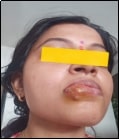
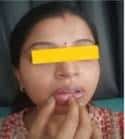

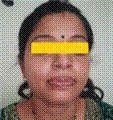
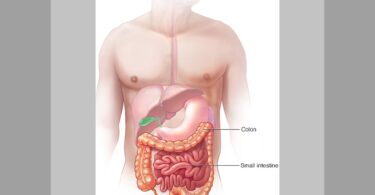
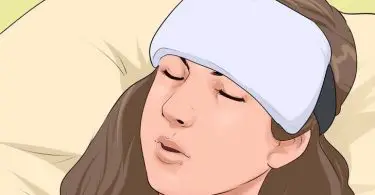
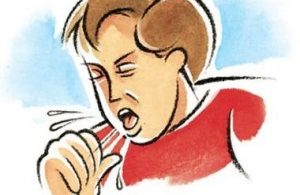

Thank you Drs. Shastri and Patel. This was a very clear discussion of angioedema which is very common today. Your case was a fine example of how it can be safely and treated without the use of steroids.